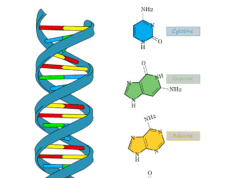Blood Pressure Medication Lisinopril
Lisinopril is a class of angiotensin-converting enzyme (ACE) medicine which uses mainly for the treatment or prevention of high blood pressure and heart failure. The dosage of lisinopril causes various types of side effects on human health. Therefore, always ask your doctor or physician before taking the lisinopril dose. It is a white or almost white crystalline solid powder insoluble in acetone and ethanol but soluble in water and methanol. The tablet or oral forms of lisinopril are always taken by mouth. It works by inhibiting the renin-angiotensin-aldosterone system (RAAS). The full effect is observed after taking four weeks of lisinopril dose.

Lisinopril Uses
Lisinopril is an antihypertensive drug prescribed by doctors mainly for the treatment of high blood pressure or hypertension in adults and children.
It is available in the market under the following brand names Zestoretic, Zestril, Prinivil, and Qbrelis. It is taken by mouth but for people who are unable to take a tablet, doctors prescribe its oral solution.
The generic drug lisinopril helps in the treatment of certain types of heart failure or after a heart attack. It is a class of angiotensin-converting enzyme (ACE) inhibitors that inhibit the production of a protein that causes blood vessels to tighten. It is also used for some patients who suffer from moderate kidney disease.
Always tell your doctor and pharmacist before taking it. If you have certain types of angioedema, heart disease, kidney disease, diabetes, and surgery including dental surgery, you should consult before taking lisinopril.
How does Lisinopril Work?
It acts on the renin–angiotensin–aldosterone system (RAAS) to prevent the conversion of angiotensin I to angiotensin II.
Lisinopril works by reducing the amount of angiotensin II in your body. The reduction of angiotensin II causes us to relax our arterioles and reduces the release of aldosterone from the adrenal cortex. Hence our kidneys can excrete sodium along with water into the urine which increases the retention of potassium ions.
How Quickly does Lisinopril Lower Blood Pressure?
Lisinopril dose can lower blood pressure about an hour after being taken. You can take it with or without food because food does not affect the absorption of such a drug.
Lisinopril Dosage
Lisinopril dosage is available in the market as a tablet or oral solution with different strengths. The tablet forms are available in the strength of 2.5 mg, 5 mg, 10 mg, 20 mg, 30 mg, and 40 mg. The oral solution is available in the strength of 1 mg per milliliter (mL).
You should regularly check your blood pressure level to determine the response to lisinopril medication. The common dosages for adults are given below in the table,
| Lisinopril dosage | ||
| Indication | Initial dosage | Maximum dosage |
| High blood pressure | 10 mg/day | 80 mg/day |
| Heart failure | 2.5–5 mg/day | 40 mg/day |
| Heart attack | 5 mg/day | If the initial dose is not enough, you may take a maximum of 10 mg/day, or your doctor can prescribe an accurate dosage. |
Dosage for High Blood Pressure
The ACE inhibitors such as lisinopril, enalapril, captopril, and ramipril are the first-line medication for hypertension or high blood pressure.
Lisinopril works by blocking an enzyme in our body which produces angiotensin II, a substance that tightens and narrows blood vessels. If your body does not produce angiotensin II, your blood vessels are wider. Therefore, your blood pressure goes down.
Doctors can prescribe only a single daily dose for controlling your blood pressure.
For Adults
The starting dose for adults is 10 mg orally once per day. If the starting dose is not enough to reduce your blood pressure, you may take 10 to 80 mg orally per day but not exceed 80 mg per day.
For Children
Lisinopril is an FDA-approved medication used for the treatment of hypertension in children above 6+ years old. The standard dosage for 6+ years of children is 0.07–0.61 mg/kg per day with a maximum dose of 40 mg per day.
Always consult your doctor before applying lisinopril medication to your children.
Dosage for Heart Failure
An ACE inhibitor is used with diuretic drugs such as digoxin to give additional advantages to congestive heart failure and hyponatremia. It is a condition in which your heart does not pump enough blood to your body. It widens the blood vessels and increases the flow of blood from the heart to your body.
The standard dosage for congestive heart failure is 2.5–5 mg orally once per day with a maximum dosage of 40 mg per day.
Dosage for Heart Attack
In many cases or early stages of myocardial infarction or heart attack, many doctors prescribe ACE inhibitor lisinopril which reduces mortality and cardiovascular morbidity in patients.
The starting dose for adults is 5 mg orally once per day. If the starting dose is not enough, you may take 10 mg orally per day for at least 6 weeks. The main aim of lisinopril therapy in heart failure is to increase blood flow from other organs to the heart muscle to prevent further damage.
Lisinopril Side Effects
It may cause various common and serious side effects on men and women. Always tell your doctor if any serious side effects after lisinopril medication. The common side effects include
- Headache
- Dizziness
- Feeling tired
- Cough
- Nausea
- Decrease sexual ability
- Rash on skin
Serious side effects may include
- Swelling of the face, throat, tongue, lips, eyes, hands, feet, ankles, or lower legs
- Difficulty breathing or swallowing
- Fever, sore throat, chills
- High blood potassium
- Liver problems (yellowing of the skin or eyes)
- Lightheadedness
- Chest pain
It should not be taken during pregnancy and breastfeeding. The drug can cause serious side effects on the developing fetus. If you take the lisinopril dose during the second and third trimesters it can cause lung and bone problems in your baby.








